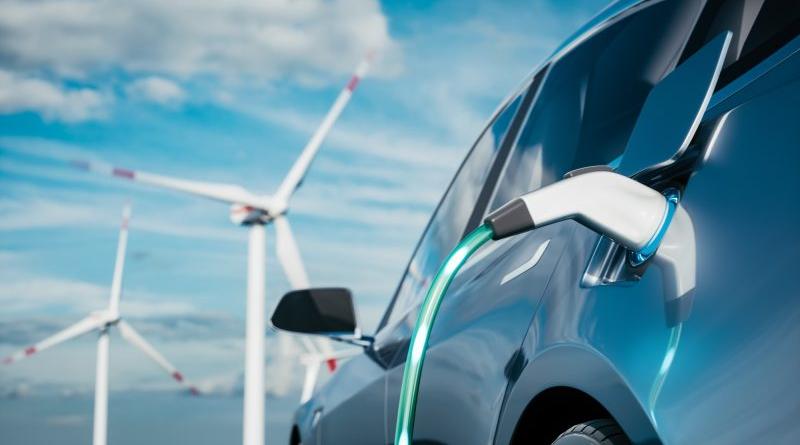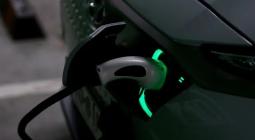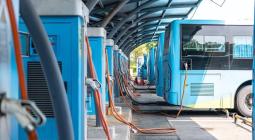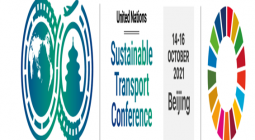To prevent outages, EU scientists want electric vehicles and the grid to talk

EU scientists are exploring how electric cars and smart grids across Europe can better communicate, in a bid to prevent power outages caused by millions of vehicles charging simultaneously.
While Europe’s electricity grid is currently stable and can easily withstand variations of around 20% in either direction, the predicted growth of electric mobility poses a potential challenge.
Once electric cars become dominant on Europe’s streets, the possibility of peaks in charging demand becomes a more serious threat, explained an electromobility researcher working for the EU’s Joint Research Centre (JRC), the research and development arm of the European Commission.
“We could have a situation where millions of people say at exactly six pm: ‘I’m home, let’s charge’. And then you get these momentaneous, absolutely dramatic power demand peaks,” the researcher told EURACTIV.
Due to the sensitive nature of their work, JRC researchers are required to speak to the press anonymously.
While some 3.1 million electric cars are currently on roads across the bloc, a small fraction of the almost 250 million vehicle fleet, the issue is expected to become noticeable once EVs are in the majority.
“Then the charging infrastructure also has to talk. It is absolutely key,” warned the electromobility researcher, tasked with providing the scientific underpinning for EU policy.
To ensure the stable functioning of the grid after the electric vehicle revolution, scientists want to see technology included in vehicles that would enable them to communicate with the power grid.
Researchers want the grid to signal to vehicles when power demand is exceeding capacity. “It must be able to say: It’s getting too much!” said the scientist.
The aim is to have a rapid, seamless information flow between charging columns and vehicles, with real-time updates on the status of the grid’s power reserves.
“During the whole charging process they are constantly talking to each other: ‘What is your battery status now?’ ‘What voltage do you want to have now?’ ‘What amperage do you want to have now?’,” explained the JRC researcher.
“This is pivotal. Because if we are not getting to a solution with this, the whole ecosystem doesn’t work,” he warned.
Slower charging
If a surge in demand for electricity does strain the grid, the solution, according to JRC research, is to temporarily slow the rate of charging.
This would see the vehicle’s power consumption drop until the grid has stabilised. For example, charging would temporarily reduce from 22 kilowatts to 12 kilowatts, or from 12 kilowatts to 3 kilowatts.
This, the JRC predicts, would add less than 15 minutes to the total time required to charge the vehicle. “If for 10 minutes you got three kilowatts rather than 12, you will hardly notice. But it has saved the grid,” said the scientist.
Asked about the expense of shifting to a more flexible communication between cars and the grid, the researcher said that the European grid is already highly flexible. The extra expense will come from installing new technology in vehicles.
The cost of this new technology depends on the amount of chips produced, he explained.
“If the chip at the moment [costs] 100 euros or so, but then you produce millions of them, the price will completely drop – they will be 90 cents,” he said. “It’s all about economies of scale.”
Stabilising the power grid
The JRC researcher also envisages a future in which electric vehicles capable of absorbing and feeding energy into the grid act as a bulwark against dips in renewable energy.
Much of renewable energy generation is periodic, dependent on elements such as sunshine and wind that cannot be guaranteed at all times.
To stabilise the grid, this renewable energy is supplemented with fossil fuel power production, which can run 24 hours a day.
As fossil fuels are removed from the electricity grid for climate reasons, Europe will require another means to ensure that power is always available.
“The first 50% of [shifting to renewables] in our electricity market was easy because the electricity grid is always stabilised by the rest,” said the researcher.
“Now, we want to decarbonise even more… And this can be achieved by having hundreds, thousands, millions of electrical cars, flexibly reacting and helping to compensate.”
This shift to batteries would essentially mean that carbon-intensive power plants could be retired, it is predicted, with EVs used across Europe, to “balance” the power grid.
Reaching a situation where a car can not only receive power but actually feed it back into the grid would be the “ultimate cherry on the cake”.
“Getting the car to really feed back many, many kilowatts, through the same plugs – this is what we have to achieve,” said the researcher.
cover photo:charging_car [Alexander Steamaze / Shutterstock.com]






